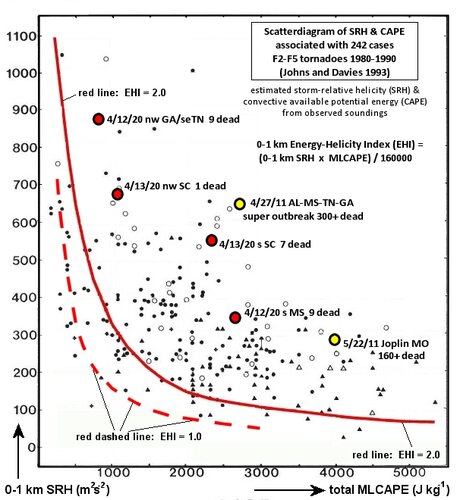JamesCaruso
Staff member
It is the balance that is important and, of course, ideally want optimal levels of both, but anecdotally I think high CAPE days have more potential for a mesoscale accident.
I remember seeing a great chart somewhere that plotted historical events that showed the correlation of CAPE/shear, but I can’t remember where. Perhaps one of the links earlier in this thread were to that chart, but both links are no longer active.
I remember seeing a great chart somewhere that plotted historical events that showed the correlation of CAPE/shear, but I can’t remember where. Perhaps one of the links earlier in this thread were to that chart, but both links are no longer active.
Last edited:

